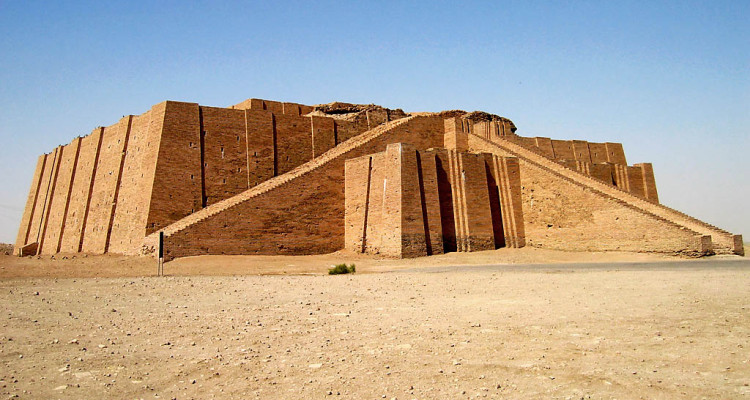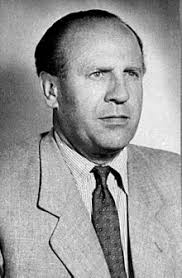The presence of temples as places where people nourish their faith and religion has existed for centuries since the beginning of the earliest civilizations. Since their foundations, temples of any religion have represented places where people could find spiritual and religious comfort. Besides this main function, temples have also played important roles in the management of their cities, impacting their societies in significant ways.

Temples in Ancient Mesopotamia, better known as “community temples,” were basically operated by priests and priestesses that were often younger relatives of the rulers. Their main role was to intervene with the gods for the fortune of their communities through prayers and offerings to their deities. In exchange, the community provided priests with food, drink, and clothing.1 Each temple was dedicated to a major deity, who was the main god of the city. Often the priests serving the temple might have been the former governor of that particular city-state.2 Like many religious organizations today, temple communities also provided help to the people in the community when in need. Temples, for example, used to take care of orphans, supply grain in time of famine, and provide ransom for people who might be captured in battle.3
Mesopotamian temples were not places where people particularly went to worship. They were thought to be the home of the city deity, and for this reason they were equipped like households. They were built with kitchens, tables (in the form of altars), living rooms, and the most important of the rooms, an inner sanctuary where a statue of the major deity stood in one of the building’s walls. Often, these temples used to have staircases to the roof, where rituals and offerings to the deity were performed (e.g. animal sacrifice to feed their god).4

Rams, sheep and doves used to be sacrificed to feed the gods. | Courtesy of National Geographic Spain
In hindsight, the role of temple communities was not limited to the city’s religious life, but they were also large socio-economic organizations.5 Temple communities in Mesopotamia also had an influence in the economy and social living of the cities. Among many of their functions, the operation and maintenance of irrigation systems was one of their highest priorities. They also controlled and managed the industry while developing and manufacturing products that later would be exchanged in foreign trade. Along with this, temples were extensive places for storaging goods and merchandise.6 The records priests and temple staff generated were so extended that some modern economic historians developed the conclusion that the Mesopotamian economy “was dominated by the temple, giving rise to the characterization of ancient Mesopotamia as a ‘temple-state economy.’”7 This was clear to see, since temples were also in charge of the finance of the city. They were in charge of collecting taxes, administrating a system of price control, regulating interest charges, financing foreign trade and legislating all private financial transactions. They also redistributed income by granting money to those in need, and often they also made loans to private individuals.8 Temples also played a role in legal matters and in maintaining social control. Marriages were performed; priests granted divorce, registered births, and administered the law.9
For the importance of their role as a major socio-economic organization as well as their role of mediators between the gods and the city, it can be concluded that Mesopotamian temples possessed a large power among the events happening in the daily life of the individuals living in a particular city. Maybe without the temples, it might have been more difficult for the rulers of the city-states to carry out the functions that these religious organizations used to perform.
- Jerry Bentley, Herbert Ziegler, and Heather Streets Salter, Traditions & Encounters: A Brief Global History Volume 1, 4 edition (McGraw-Hill Education, 2015), 15. ↵
- Richard L. A. Sterba, “The Organization and Management of the Temple Corporations in Ancient Mesopotamia,” The Academy of Management Review 1, no. 3 (1976): 16. ↵
- Bentley, Ziegler, and Streets Salter, Traditions & Encounters: A Brief Global History Volume 1, 15. ↵
- Ronald Wallenfels, World Eras – Vol. 8, Ancient Mesopotamia (Detroit: Gale, 2004), 162. ↵
- Sterba, “The Organization and Management of the Temple Corporations in Ancient Mesopotamia,” The Academy of Management Review, 17. ↵
- Sterba, “The Organization and Management of the Temple Corporations in Ancient Mesopotamia,” The Academy of Management Review, 18. ↵
- Wallenfels, World Eras – Vol. 8, Ancient Mesopotamia, 161. ↵
- Sterba, “The Organization and Management of the Temple Corporations in Ancient Mesopotamia,” The Academy of Management Review, 19. ↵
- Sterba, “The Organization and Management of the Temple Corporations in Ancient Mesopotamia,” The Academy of Management Review, 19. ↵



61 comments
Destiny Flores
Temples are such wide known cultural structures known to represent a wide variety of religions all over the world. It’s really interesting to think how an organized pile of compact dirt, can play such huge roles in such complex ideas that surround a society. For example, the financial status and habits, as well as the religious beliefs of one culture.
Joshua Castro
This is an extremely well written article. It can easily be seen that extensive research was put into this article! Prior to reading this, I have always thought of temples as a burial place or a place of worship. It was really emphasized that a temple is so much more than this. It brings the community together and allows harmony to be achieved within the society. This was a fantastic article!
Johnny Woo
Good general account of ancient Mesopotamia temples, but you’d better state which period it was. Not every temple in ancient Mesopotamia has evidence of catering equipment.
Troy Leonard
what a great article that you have wrote ! all this time I thought that the temples were used for a place of worship and prayer but reading this article I found out that they have multiple different uses. I think that I was a great way to get the community together nd spent time with each other. from what I rad having the temples in the ancient Mesopotamia was very important to them.
Josemaria Soriano
A really interesting article. Many people, when the word “temple” is mentioned to them, only thinks in a religious motif. However, this article eloquently shows us that the temple, for Mesopotamian civilization, was a symbol of community and of economic harmony as well. This seems new to us, but I think it is necessary to say that the first Christian communities also shared this essence. The first communities, as described in the “Acts of the Apostles”, shared everything. The money collected was put into a common box and then distributed according to one’s need. Likewise, life in community was extremely important. This is something that has unfortunately been lost in the Church, a Church that nowadays makes blind eyes to political and economic scandals that happen around the corner. I think this article leaves us with a very deep and controversial question: should the Church use its power to intervene in the economy and politics of a country,? Should they follow the example of the Mesopotamian temples? The answer is yours.
Mario Sosa
I find it to be very interesting how Mesopotamian temples like the Ziggurat played such a vital role to their society in that the temples financed their society and managed their economy. Much different than what we see in today’s world. What also caught my attention was how the design of Mesopotamian temples was shaped to be more like a normal house than a traditional temple/church that’s filled with benches and alters. Overall, this was a really fascinating article; job well done!
Joshua Breard
I found this article to bestseller interesting as I thought the temples were just places of worship but really they were the foundations for churches to the people. It also makes sense to have priests now be in the higher end of society in Mesopotamia as they would need to pray to each of the different Gods to grant them various different blessings. Interesting Article!
Emily Jimenez
At first, I thought ziggurats were like pyramids and were built as tombs for the rule of the kingdom. It is interesting to see what these temples were actually used for. When I think of a temple I think of sacrifices and worship, not a place where irrigation and financial administration occurred. It’s crazy to think that without these temples the city probably would not have been able to flourish.
Morghan Armenta
I had not realized that temples were not simply early church structures. I had presumably assumed that the temples functioned as a building of gathering for worship and not so much a place of refuge for orphans and needs of the locals in the surrounding city. More interesting, I had not put into perspective that Pagan belief systems relied heavily on the use of sacrificial ceremonies which would make their churches surrounded around being more of a place for sacrifice for example being equipped with kitchens for food preparation. This was all very surprising to me.
Brianda Gomez
It is extremely amusing the number of things that went on in these temples. Before reading this article, I thought that they were built to worship a certain god. It was more than religion; these temples were also homes for orphans. They oversaw the finance of the city: taxes, interest charges, financing foreign trade, and maintaining social control. The most important part of these buildings was the inner sanctuary where a statue of a major deity stood. After reading this article I discovered that the city basically revolved around these temples.